Lockheed Martin has unveiled an uncrewed version of the UH-60 Black Hawk helicopter, known as the S-70UAS U-Hawk, which the company says is the world’s first fully autonomous Black Hawk platform.
The development, announced on 13 October, is a major step in transforming a proven military airframe into an uncrewed multi-mission system, according to the company.
Developed by Sikorsky, a Lockheed Martin company, the U-Hawk was converted from a UH-60L Black Hawk in under a year. Engineers removed the cockpit and crew stations, installing a new fly-by-wire control system integrated with Sikorsky’s MATRIX autonomy technology. The result, Lockheed Martin stated, is a platform with 25 percent more cargo capacity than the standard crewed helicopter.
Rich Benton, Sikorsky vice president and general manager, was quoted in the release as saying that the design “offers enhanced firepower, protection, and mobility” while remaining affordable and easily replicable at scale. The company’s Sikorsky Innovations division led the redesign, with the first flight of the U-Hawk expected in 2026.
The modified airframe’s larger internal space allows it to transport bulk cargo, missiles, or uncrewed ground vehicles, and to launch reconnaissance or strike drones. The aircraft can also carry additional internal fuel for increased range, with Lockheed Martin claiming potential endurance of up to 14 hours or a range exceeding 1,600 nautical miles.
Unlike conventional helicopters, the U-Hawk is operated by a single user through a tablet interface. Once cargo is loaded, an operator inputs mission goals, and the MATRIX system autonomously generates and executes a flight plan using onboard sensors and cameras for navigation.
Sikorsky’s autonomy team highlighted that removing the cockpit not only increases usable space but also reduces cost. Igor Cherepinsky, director of Sikorsky Innovations, said that by leveraging commonality with existing UH-60 fleets, the U-Hawk provides “a cost-effective utility UAS” while cutting operating and maintenance requirements.
The U-Hawk can still perform side-door cargo loading and external lift missions of up to 9,000 pounds. It is designed for tasks such as resupply, casualty evacuation, and launch-and-recovery operations for uncrewed systems.
Lockheed Martin said the design demonstrates how autonomous variants could extend the life and flexibility of legacy Black Hawk fleets while expanding mission profiles into higher-risk environments.


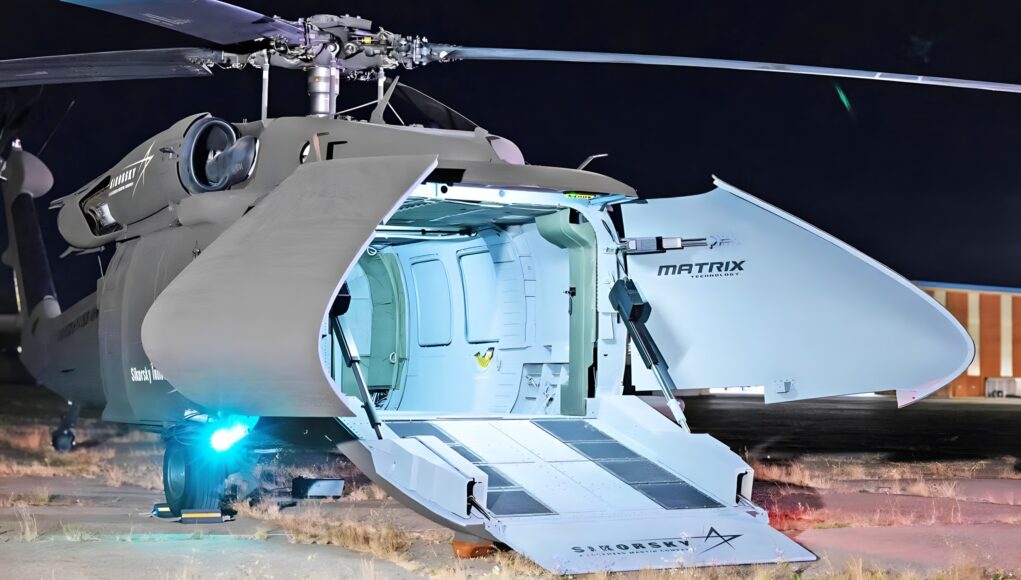



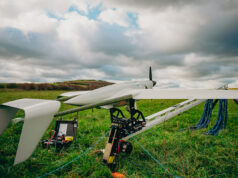
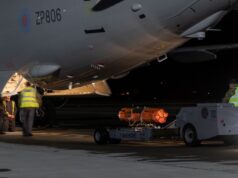


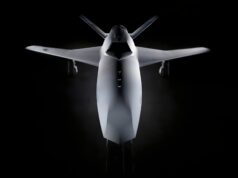


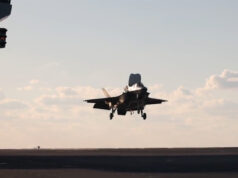

I’m not sure I see the point? It’s just a Blackhawk that has to emit to fly? Like granted less risk to crew but if it gets shot down it still is just going to be shot down and it’s a blackhawk, it’s not expendable.
But it is a drone innit?
If it is a drone it must be better because….something and something else….
When I start seeing drones like this I alway think the next step will be to pop a load of seats in them……Fu%k ever getting into an aircraft where the pilot is not crashing and burning with me.thats all I will say to that….
It’s the Underpants Drones!
Phase 1: Remove pilot
Phase 2: ?
Phase 3: Profit
One of my favourite episodes.
One large point is that they are converting obsolescent H models into the un-manned version. So they are taking airframes that the US and allies are retiring and converting them to UAV’s.
Second point is that there are ways to use this conversion to lengthen the range of the aircraft.
But reducing the risk to crew seems to be the biggest factor. If you really need to resupply (or give drone support) a unit that is in an area that is high-risk for manned aircraft, use a U-Hawk. Ukraine seems to have shown that standard helicopters are even more at risk now than they were in years past. Ukraine still uses theirs at or near the front lines for special forces but most of the rest of their armed forces seem to be using their helicopters further from the FEBA.
If it’s not expendable then reducing the risk to the crew is not really a benefit, as you don’t want to loose it anyway.
I hear you, but any UAV is expendable, even if you hope to get multiple uses out of it.
Any crewed platform is not “expendable”.
The U-Hawk is an intelligent use of a nearly fully depreciated asset. Use it when the risk to crew is high but the mission really needs to be accomplished. The Limas are getting retired. But we can spend some money and get a very useful UAV out of the otherwise discarded airframe.
Just my 2 cents worth.
You can load a vehicle in (well, a buggy or UGV), which is more than can be said for base BH.
Also maybe more weight capacity for moving dense cargo?
“More weight capacity for moving dense cargo”.
That’s no way to talk about Americans.
I can see a scenario where you take a marine unit in crewed Blackhawks with their supplies in the larger uncrewed ones. The larger cargo space could potentially allow development of small artillery or mortar systems that you could not fit into a crewed Blackhawks. All comes down to what that extra 25% could be used for
Another scenario would be like they had a lot in Vietnam where you troops needed rearming in combat but it was considered too unsafe an area to send helo crews. Although these will still be pricey so maybe practically would suffer same issue.
Yeah, they lost that one.
They.have lost most wars they have been in post ww2.
Yup, Maybe It’s time to retake the Colonies again ? 😁🗽
It is more expendable than a Blackhawk with a crew in it. Removing crew capability uncouples material losses from crew losses, allowing the same number of pilots to operate a bigger fleet. And leaving only cargo and combat capabilities allows it to be built more cheaply.
Suddenly, it can fly in a no-fly zone that is too unsafe for humans, just like Reapers did. Or to be used as a short-range rocket launching hunter-killer against pesky Shahid drones.
I have to say that I agree with Dern. What is the point of it?
The point is you can resupply the front lines,
evacute casualties, without risking the pilots lives
because it`s operated remotely.
You don’t want to evacuate casualties in unmanned platforms.
Casualties lives matter too.
You do not need a huge ‘lump’ like that for casevac, unless you are clearing up a battlefield, by ‘stacking them in’ 6 high!
Clearly it was a good exercise in allowing trainee’s to re-purpose an ‘old’ Blackhawk. If however the ‘re-purpose’ costs could be brought down significantly, maybe new uses could be found for all manner of older airframes.
God, you lot and your critical thinking. Can’t you see that it’s a drone? Just trust in drone Jesus.
Looks cool to be fair.
The future of carrier onboard delivery.
14 hours is well over 1,000 nautical miles
Imagine the range they would get from a heavy rotor.
That’s still with refuelling stops…
Every helicopter is going to crash at some point, may as well take the pink bodies out of them before they get cooked.
Range of this drone carrier is irrelevant if it launches from a flying aircraft carrier or satellite
When everything becomes autonomous what do we do with the people?
We could try making them autonomous too. Of course training people how to think might just be that bit too radical.
Copy them so we can have Drone People to drive driverless vehicles and do the washing up.
What could you drive in and out of this? I have never seen a front loader helicopter.
Well If you select 800 Spin Cycle, a full Duvet set might be possible.
And pillowcases?
Yup, “Full Duvet Set”, I just bought a set for the Motorhome, it has pillow cases.
If Blackhawk cargo drones are made to save money. How about giving us a price? Then we might compare it to what non-pork-barrel drone manufacturers might supply. Suspect price comparison between a Blackhawk & a commercial drone may be breathtaking?
If Blackhawk cargo drones are made to save money. How about giving us a price? Then we might compare it to what non-pork-barrel drone manufacturers might supply. Suspect price comparison between a Blackhawk & a commercial drone may be breathtaking?
You got enough FFFF’s ?
Echo
I have a feeling this is Sikorsky (Lockheed Martin) trying to extend the production time-line, before it starts to wind down. Due to the US Army replacing their Blackhawks with the MV-75. If the unmanned variant is used, it can only really be used with other Blackhawks. As it won’t have the speed or range to keep up with the MV-75. The Apache is going to face a similar problem. It is too slow to ride shotgun for the MV-75.
I honestly don’t see the value in this aircraft, when the MV-75 comes into service. Especially if its expected to lead an assault. Something like Bell’s V-247 Valiant would be more useful in the assault/gunship role, as it can keep up with the MV-75. Whilst a MV-75 will be able to underling the same UGV the Blackhawk can carry internally, but at a cruise speed (150 knots) that the Blackhawk tops out at.